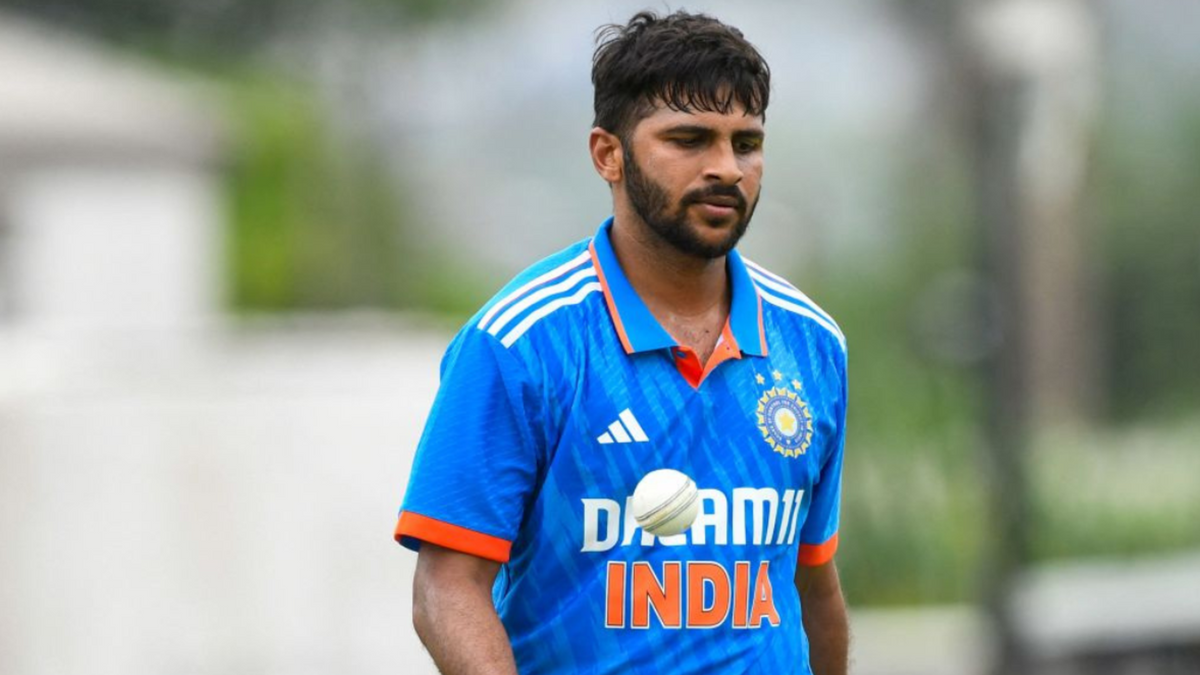
Shardul Thakur is an enigma that only Shardul Thakur understands. With a home World Cup coming up, he might have a greater role to play than one would think, writes Naman Agarwal.
Subscribe to the Wisden Cricket YouTube channel for post-match analysis, player interviews, and much more.
Since the 2019 World Cup, 19 bowlers have taken more than 50 ODI wickets. Ten of them are fast bowlers. And only one of them belongs to a team that will feature in the 2023 World Cup – Shardul Thakur.
Despite being six years into his international career now, Thakur has been looked at as someone who ‘brings luck’, who ‘has a lot of heart’. Rarely has he been looked at for what he is: an extremely skilful player continually improving his game, contributing in all three dimensions, getting the job done more often than you’d like to believe.
In 33 ODIs since the 2019 World Cup, he has gone wicketless only seven times. His 52 wickets in this period have come at 28.34 and an economy rate of 6.18. While the latter is on the higher side, much of that can be attributed to the pre-2022 period, when he went at 7.09 an over. In the last two calendar years, he has improved dramatically.
[breakout id=”0″][/breakout]
Since the start of 2022, Thakur has picked 36 wickets from 23 ODIs, going at 5.68 runs and picking a wicket every 25.6 balls. Among fast bowlers, only Mohammed Siraj has picked more – 43 from 23 games.
Thakur’s effectiveness has been hard to make sense of. Part of that is because he does not check many boxes one associates with devastating fast bowlers. He is neither tall nor gifted with an athletic body; he bowls neither at the start nor at the end of the innings; nor does he clock upwards of 145 kph.
When something can’t be made sense of, it is either dismissed altogether or elevated to a divine status. Thakur has been at the receiving end of both. Some call him Lord. Sometimes even the greatest minds in the profession struggle to make sense.
The fact that Thakur mostly works his magic through the middle overs takes some sheen off his achievements. Overs 11 to 40 constitute 60 percent of an ODI innings. The action in this period might be more sedate than in powerplay and the death overs, but it plays a major role in determining the direction of the game. And Thakur excels in it.
[breakout id=”1″][/breakout]
Having made his ODI debut in August 2017, Thakur has taken 41 wickets at an average of 23.54 in the middle overs. Only Lockie Ferguson has more wickets in this phase as a fast bowler – 44 – but his wickets have come at 31.75 apiece.
If you look at just the recent past, Thakur’s middle-overs numbers look even better: 26 wickets since 2022 at 21.23 and an economy rate of 5.18. Among fast bowlers from teams playing in the 2023 World Cup, Taskin Ahmed’s 18 wickets are next.
What sets Thakur apart is his game-breaking ability. He has picked three or more wickets in an ODI innings ten times since his debut. Given that he rarely bowls with the new ball in the first ten overs, or in the last ten where batters are looking to go big and providing greater wicket-taking chance to bowlers, that is an impressive achievement.
[breakout id=”2″][/breakout]
While Thakur has done enough with just the ball to make a case for being in India’s first-choice ODI XI, it is often his batting ability that gets him picked. India have a systemic problem of its bowlers not being able to bat and Thakur is one of the very few, perhaps the only one among fast bowlers who offers a solution to that.
His overall ODI batting numbers aren’t extraordinary, but an average of 18.52 with a strike rate of 106 while batting at No.8 is gold dust for an Indian side that otherwise goes directly from No.7 to 11.
He does get it wrong at times, though. When he does, it does looks ugly. His economy rate in the last five overs of an ODI innings is 11.54. Only Thisara Perera has bowled more balls than Thakur since the latter’s ODI debut and has gone for more – 11.76. But with the resources India have, this is a problem that they can easily avoid by simply not giving Thakur the ball at the very end.
All-rounders have always played major roles in tournaments like the World Cup. With the upcoming edition being in India, the focus will be on batters and spinners, making it ideal for Thakur to slip under the radar and “do his thing” as he has been doing all these years.
A good World Cup should make people look beyond the cliches and identify the skills and methods behind the Thakur phenomenon. Or maybe it won’t. Maybe they won’t want to know. And maybe Shardul Thakur will always remain the unsolved mystery that he is.








